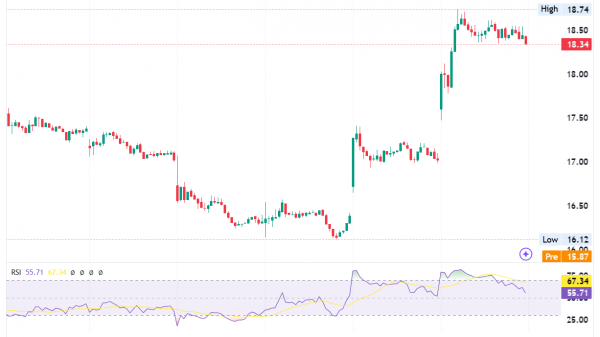What Are the Financial Statement Assertions?
Financial statement assertions are claims made by company management about their financial statements. These assertions are important to auditors for two main reasons.
The main goal of a financial statement audit is to gather enough evidence. The latter determines if the financial statements accurately reflect the company’s financial position, results, and cash flows. Auditors check if the evidence they collect supports or contradicts the report’s assertions.
The second goal involves auditors understanding the entity, its environment, and internal controls. This understanding helps them assess the risk of material misstatement. Financial statement assertions provide a framework for evaluating the likelihood of material errors in financial information or account balances.
The US government and international auditing standards provide guidance on financial statement assertions. However, the specific assertions may differ. The PCAOB also covers this subject in AS 1105 (revised from AS 15 on December 31, 2016) and the IFAC in ISA 315.
Investors should pay attention to these claims, as they form the basis for key financial metrics used to assess stocks. These metrics, including earnings per share (EPS) and price-to-book ratio (P/B), help analysts and investors evaluate a company’s potential.
Furthermore, the Financial Accounting Standards Board sets accounting standards in the US. When arranging their financial statements, companies must adhere to these regulations. The FASB requires publicly traded companies to prepare their reports according to Generally Accepted Accounting Principles.
What Is Financial Statement Assertions’ Audit?
External auditors, who are independent accounting professionals, use a variety of audit procedures to verify and confirm the data presented in a company’s financial statements. These auditors play a crucial role in ensuring the accuracy and reliability of financial reporting. The financial statement assertions they examine include:
Occurrence
The occurrence assertion confirms whether the transaction listed on the financial statements happened. This can include checking a bank deposit. It can verify if a sale occurred on the specified date to prove that accounts receivable balances are in order.
Existence
The existence assertion confirms the existence of the equity balances, liabilities, and assets listed in the financial statement. For instance, if a balance sheet shows $10,000 in inventory, the auditor must confirm that inventory exists. The procedure for confirming the balances of accounts receivable is the same.
Moreover, the auditor must verify the accounts receivable balance by using multiple methods. These latter include selecting a specific accounts receivable customer and looking through all associated transactions for that specific customer.
Auditors can also use bank reunion and matching bank statements to verify the existence of bank deposits. To obtain current bank balances, they can contact the bank directly.
Completeness Assertion
Auditors confirm by completing their checks that the organisation or the company correctly entered all transactions for the given period. The checks must be within the proper timeframe. For example, an examiner might review payroll records. They ensure the company pays all wages and salaries within the correct period.
This might involve examining payroll records, an active employee list, and a payroll journal. It may also include any payroll accruals made or reversed during the period. Auditors check completeness by reviewing bank statements. They ensure the company promptly documents all deposits within the period.
In addition, examiners review inventory transactions within a given period. They ensure the company properly records inventory by analysing inventory levels and associated sales figures. The team might even search the bank for any unrecorded deposits.
Accuracy
Auditors examine individual transactions to ensure accurate amounts, verifying the validity of the entry. Besides, they often examine specific customer accounts. This includes payments, ensuring that the reported sum matches the client’s pay.
Right and Obligations Assertions
Obligations and rights assertions establish ownership of liabilities, assets, and equity in the financial statements. Therefore, if your small company is being audited, the team managing the project might request proof that you own the business. This could also include documents proving your company owns the money in its bank account.
Auditors may also examine other assets and review liabilities. They ensure the company’s bills are the business’s responsibility, not the owner’s.
Valuation
Verifying that all financial statements have been recorded at the correct valuation is done using the valuation assertion. One must assume a customer will only pay the full amount owed by reporting the account.
Auditors also check the accuracy of bad debt allowances by reviewing the accounts receivable ageing report. Moreover, they examine inventory to ensure the company uses the correct valuation techniques and assigns the proper value.
Cut-Off
The team typically uses the cut-off assertion to verify that the company or organisation recorded transactions within the relevant accounting period. Besides, they frequently verify the accuracy of the cut-off for payroll and inventory balances. Those who report inventory levels or accrue payroll should pay special attention to this.
Classification
The financial statements themselves are the subject of the classification assertion. Auditors recognise accounts payable, notes payable, and interest payable as distinct entities, even though they are all payables. Grouping notes payable or interest payable transfers as accounts payable or notes payable is never appropriate.
Types Of Financial Statements Assertions And Appropriate Audit
Financial statement assertions include three main categories, each addressing different aspects of financial reporting. These categories provide a comprehensive framework for auditors to assess the accuracy and reliability of financial statements. Let’s examine each category and its specific assertions:
Transaction Assertions
Occurrence: Verifies that recorded transactions actually happened.
Completeness: Ensures all transactions are recorded.
Accuracy: Confirms transactions are recorded at the correct amounts.
Cut-off: Checks that transactions are recorded in the proper accounting period.
Classification: Ensures transactions are recorded in appropriate accounts.
Account Balance Assertions
Existence: Confirms that assets, liabilities, and equity interests exist.
Rights and Obligations: Verifies the entity’s control over assets and responsibility for liabilities.
Completeness: Ensures all balances are recorded.
Valuation: Checks that balances are recorded at appropriate amounts.
Presentation and Disclosure Assertions
Accuracy: Ensures disclosures are properly described and quantified.
Completeness: Confirms all required disclosures are present.
Classification: Verifies classification of information in the proper categories.
Understandability: Ensures disclosures are clear and comprehensible.
Auditors use various procedures to verify these assertions, such as:
Examining bank statements and reconciliations
Reviewing payroll records
Analysing inventory transactions
Checking accounts receivable balances
Verifying ownership documents
These assertions and audit procedures help ensure the accuracy and reliability of financial statements, which is crucial for investors and analysts when evaluating a company’s financial health and potential.
Final Thoughts
In summary, the financial statement assertions are important in auditing. They also provide a framework used to evaluate how accurate financial data is. Auditors use these assertions to determine and avoid misstatements.
Furthermore, these ensure the financial statements’ accuracy and show a company’s financial position. Thus, these assertions are important for investors who focus on financial metrics to evaluate stocks. They will help you determine whether the stock is a good investment. Stay tuned to learn more about the financial world.
The post Financial Statement Assertions: Types in Auditing appeared first on FinanceBrokerage.


































